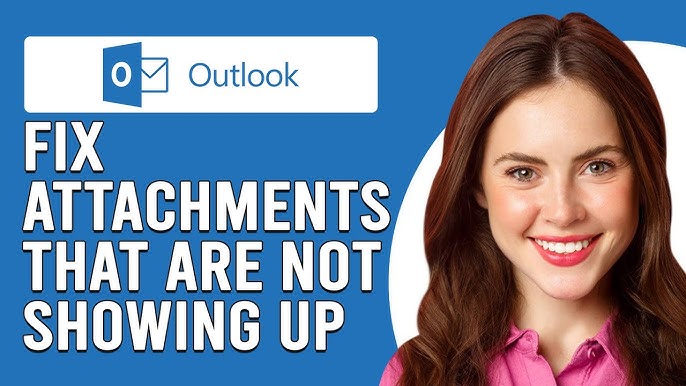
Have you ever faced a situation where your attachments are not showing up in Outlook? It can be frustrating, especially when you’re in the middle of something important. Don’t worry—you’re not alone. Many Outlook users encounter this issue, and it can happen for several reasons. In this blog, we’ll discuss all the possible causes, solutions, and tips to ensure your attachments show up properly.
Let’s dive in and get your issue resolved step by step
Outlook often blocks certain file types for security reasons. If your attachment is in a format that Outlook considers unsafe (e.g., .exe or .zip), it may not show up. This is to prevent harmful files from causing damage.
Sometimes, emails sent in Rich Text or Plain Text format can cause attachments not to appear in Outlook. Attachments are often embedded in the email body instead of showing up as separate files.
An outdated Outlook version can lead to bugs or compatibility issues, including attachments not being displayed.
Your firewall or antivirus software might block attachments to protect your computer from malware. This is especially true if the software flags the attachment as suspicious.
If your Outlook data file (PST) is corrupted, it might prevent attachments from appearing. A corrupt file can disrupt normal Outlook functionality.
Outlook limits the size of attachments you can send or receive. If the file exceeds the size limit, it might not show up.
Some custom rules in Outlook, such as filtering or spam rules, may inadvertently hide attachments.
If you’re using Outlook on a browser, certain cache or cookie settings might interfere with attachment visibility.
Here are the solutions you can try to fix this issue. Follow these steps one by one, and your problem should be resolved.
.pdf, .docx, or .jpg should work fine..zip folder or rename the file extension (e.g., .exe to .ex_).C:\Users\[YourName]\Documents\Outlook Files).Outlook.exe /safe in the Run dialog (Win + R)..pdf, .docx, .png, or .xlsx to avoid being blocked by Outlook.This could be due to blocked file types, email format issues, or antivirus interference. Try the solutions mentioned above to resolve the issue.
Ask the sender to rename the file extension or compress it. You can also change your security settings to allow certain file types.
If the attachment isn’t showing up, check the email source or ask the sender to resend the file. If the PST file is corrupt, repairing it may help.
No, Outlook only blocks potentially unsafe file types like .exe or .bat to protect users.
Compress the file or use cloud storage. Alternatively, adjust the size limit settings in the registry (advanced users only).
When attachments are not showing up in Outlook, it can be inconvenient, but the good news is that the issue is usually fixable. By understanding the root cause—whether it’s blocked file types, outdated software, or antivirus settings—you can quickly troubleshoot and resolve the problem.
We hope this guide helps you fix the issue! If you’re still facing problems or need further assistance, don’t hesitate to reach out for professional support. Attachments are crucial for seamless communication, and resolving these issues will make your Outlook experience smoother and more efficient.
